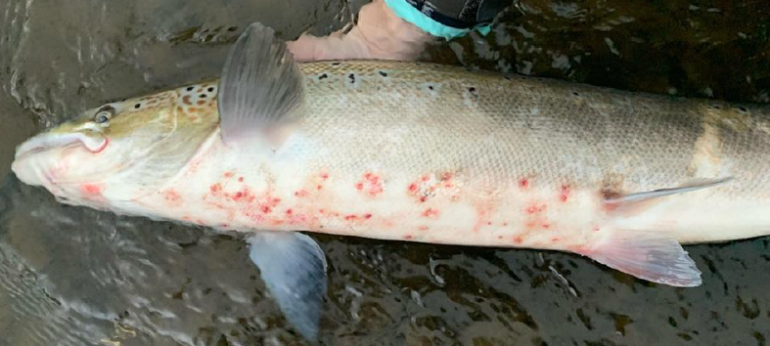
NRW Briefing Note – Salmon Red Skin Disease
Dear Member,
The following briefing note has recently been received from National Resources Wales and should be read with importance.
NRW Briefing Note: 1st July 2021
Issue
There have recently been reports of small numbers of wild salmon caught in Scandinavia, Russia, Ireland and parts of the UK with signs of ventral haemorrhaging. We are monitoring the situation on all our major salmon rivers and working with partners to better understand the cause. If you encounter any similar sightings or see fish in distress please report these to us immediately.
Initial Reports
Low level mortalities of wild Atlantic salmon exhibiting unusual ventral skin lesions have been reported in rivers draining into the Baltic Sea and Northern Atlantic in the last few years. Cases were first reported in the UK from Scotland in summer 2019. This condition, termed Red Skin Disease, has prompted efforts to monitor its occurrence, confirm exact characteristics of the skin lesions and identify the cause.
What does it look like?
From reports so far, the most consistent characteristics of the condition appear to be severe ventral haemorrhaging in fresh run Atlantic salmon. This can appear like a spotted red rash (petechia) running along the underside of affected fish. These lesions may become ulcerated and vary in appearance due to secondary infections. Affected fish have mainly been seen during the warmer summer months.
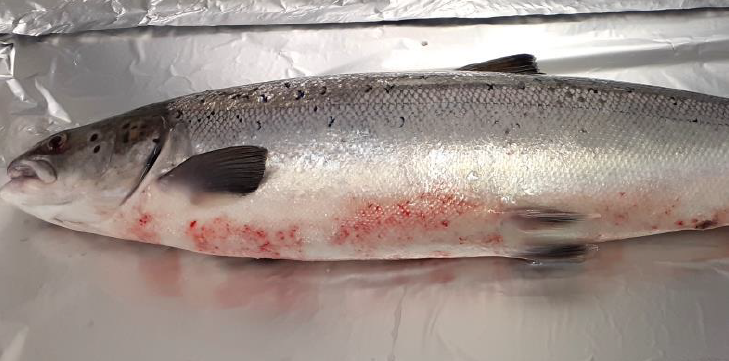

What is the cause?
The cause of this condition is currently unknown. Detailed characteristics of the condition also remain unclear. There is a need to establish more reliable descriptions to support consistent reporting and enable comparisons to be made between countries. Identifying the cause of any skin condition in wild salmonids can be challenging due to the role of common opportunistic infections that can complicate or mask underlying changes.
What is the impact of this condition?
The importance of this condition is currently unknown. So far, only small numbers of salmon have been affected and it is unclear what impact these lesions have on fish health. Low level lethargy and mortality have been reported in some rivers, although affected fish may also appear in good health and it is thought that these fish can recover.
Observations in England and Wales
We have had no reported cases of mortality associated with severe ventral haemorrhaging in wild salmon. Staff operating our index monitoring traps in England and Wales have seen mild red patches on the underside of healthy salmon returning to our rivers for many years, but these are less severe than cases reported recently from other countries and have not been associated with any losses or evidence of ill-health. In 2021 we have received increasing reports of salmon exhibiting the symptoms in Wales.
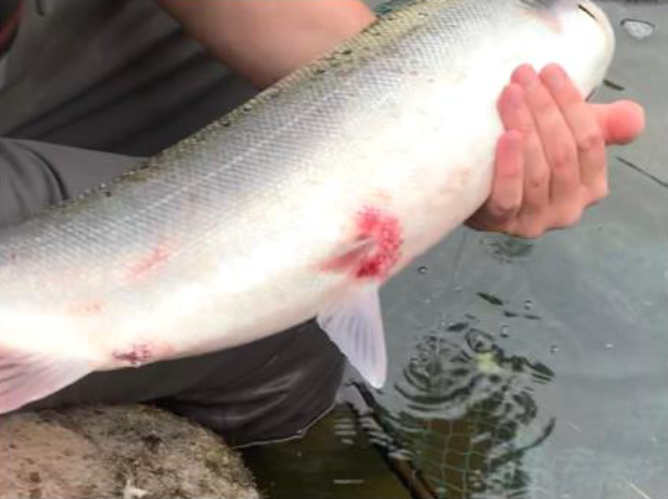
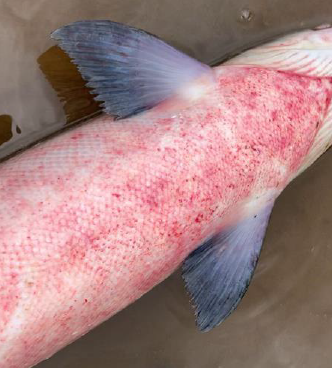
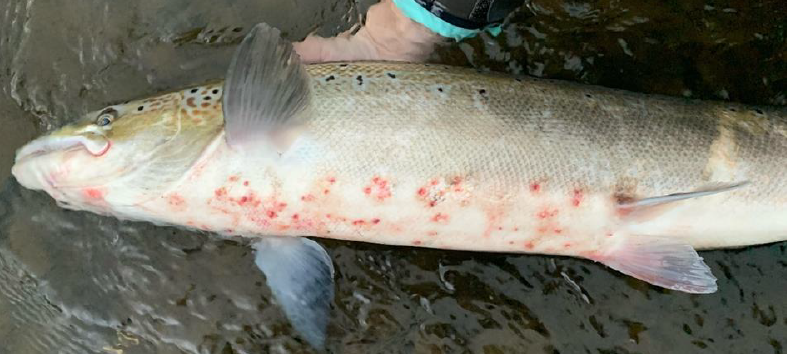
What you should do?
We are asking anyone who encounters fish that are diseased or in distress to contact our incident hotline immediately. This will allow us to respond promptly to any serious or emerging disease incidents.
We also ask for anglers to be vigilant but not to remove or handle any fish in distress. Note all salmon caught in Wales must be returned to the water with least possible injury – this includes injured or moribund fish.
Photographing fish with signs of abnormality can be extremely useful if the situation allows and it is safe to do so. However, any fish caught by rod and line showing signs of disease should be returned to the water as quickly as possible.
We encourage anglers to practice good biosecurity and disinfect their waders, boots, nets and wet equipment after fishing and before moving to other waters. This can be done by thorough drying in sunlight or with the use of appropriate disinfectants.
To report dead, distressed or dying fish, please contact our incident hotline immediately on 0300 065 3000.
- Where? Please provide a grid reference if possible, for example, NT 252 735. Otherwise, you should provide an accurate description of the location
- What is the report? Take a photograph of the fish if you can
- When did the observation take place?
For further information please contact Fisheries.Wales@cyfoethnaturiolcymru.gov.uk.


